The Ultimate Ecommerce SEO Checklist: Boosting Visibility and Conversions
Transform your online retail success: Unleash the power of your e-commerce using our comprehensive ecommerce SEO checklist.
SEO for ecommerce is an excellent way to rank your product and category pages. It enhances your site’s visibility on search engines and helps you reach customers in a cost-effective manner.
While it takes time to bring about results, it eventually pays dividends. Here’s our ultimate checklist to help you nail SEO for ecommerce and generate maximum results.
Technical SEO
For ecommerce, search engine optimization (SEO) is about ranking your product and category pages on top of the SERPs. But to achieve that, you need to check certain boxes if you want your website to rank. And that’s where technical SEO comes into play.
There are several factors at play here. We’ll look at them one by one.
Organize Your Site Structure
Having a clean and organized site structure means organizing your site in a logical and user-friendly way, using clear and descriptive URLs, breadcrumbs, and navigation menus.

An organized site enhances user experience and facilitates easy navigation. It also helps Google index different pages of your site, ultimately improving its findability.
Proflowers has designed its homepage with a clean and organized site structure, sensibly categorizing thousands of products and making it easy for visitors to find and purchase the desired item.

Like the one shown in the image above, a structured category hierarchy improves website usability. It enhances SEO, drives organic traffic, and improves usability for increased conversions.
‘The Flower Bucket’ have taken their eCommerce site for local flower delivery even further to optimize the entire user experience for their online shoppers by including filters like:
- Show products available in your recipient’s area (by ZIP code)
- Filter your results by price range
- Sort products by ‘Bestselling’ or by ‘Lowest/Highest Price’
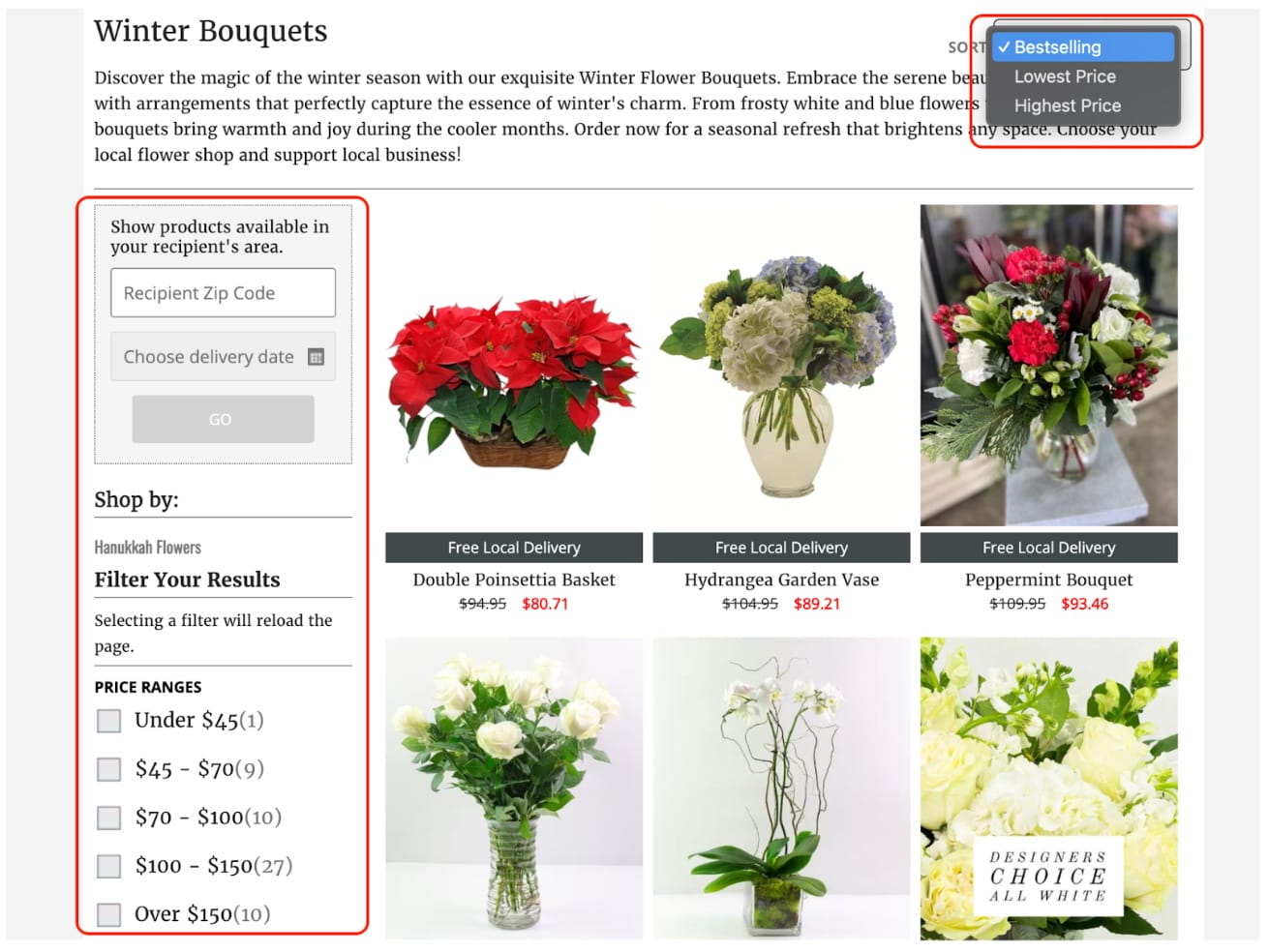
Secure Your Site With HTTPS
With HTTPS, you get end-to-end data encryption on your ecommerce site. Customers can visit your site without worrying about password or data theft, which builds trust in your business.
Besides, Google has made it mandatory for websites to get a Secure Socket Layer (SSL) certificate for their HTTPS, as it guarantees 24/7 website security and improves search rankings.
Activate Additional Security
To provide your customers with a seamless and secure way to access your site and services, consider using a standard protocol like SAML or OAuth.
SAML and OAuth are two systems that make secure user access more convenient and safe. They allow users to log in to multiple sites using a single sign-on, or SSO, improving the user experience and reducing the risk of password breaches.
SAML is primarily an authentication system, while OAuth is an authorization system.
Choose one or use both in combination, depending on your needs and preferences.
Create a Clean URL Structure
You must create URLs that are short, descriptive, and keyword-focused to enhance Google’s search relevance, for example:
“https://site.com/products/pets/dog-toys”
Second, remove dates from your URLs to make the content look evergreen and fresh because Google appreciates new content.
With clean URLs, your product pages will be easier to crawl, index, and rank on Google, while the messy ones will be hard to decipher, for example:
“https://site.com/products/index.jsp?category=pets&id=dog-toys”
Guarantee Fast Page Load Speed on All Devices
James Wilkinson, the CEO and co-founder of Balance One Supplements, a global ecommerce store specializing in selling premium dietary supplements, says,
“The difference between a sale and an abandoned cart can hinge upon just a few trivial seconds’ delay in page load time. Quick load times being directly correlated with improved search rankings—not only enhance user experiences dramatically but also potentiate sales.”
You must improve site speed by optimizing images, using browser caching, and a content delivery network (CDN) to improve the site’s user experience.
With tools like PageSpeed Insights, you can check how your site performs on different devices and get suggestions for improvement.
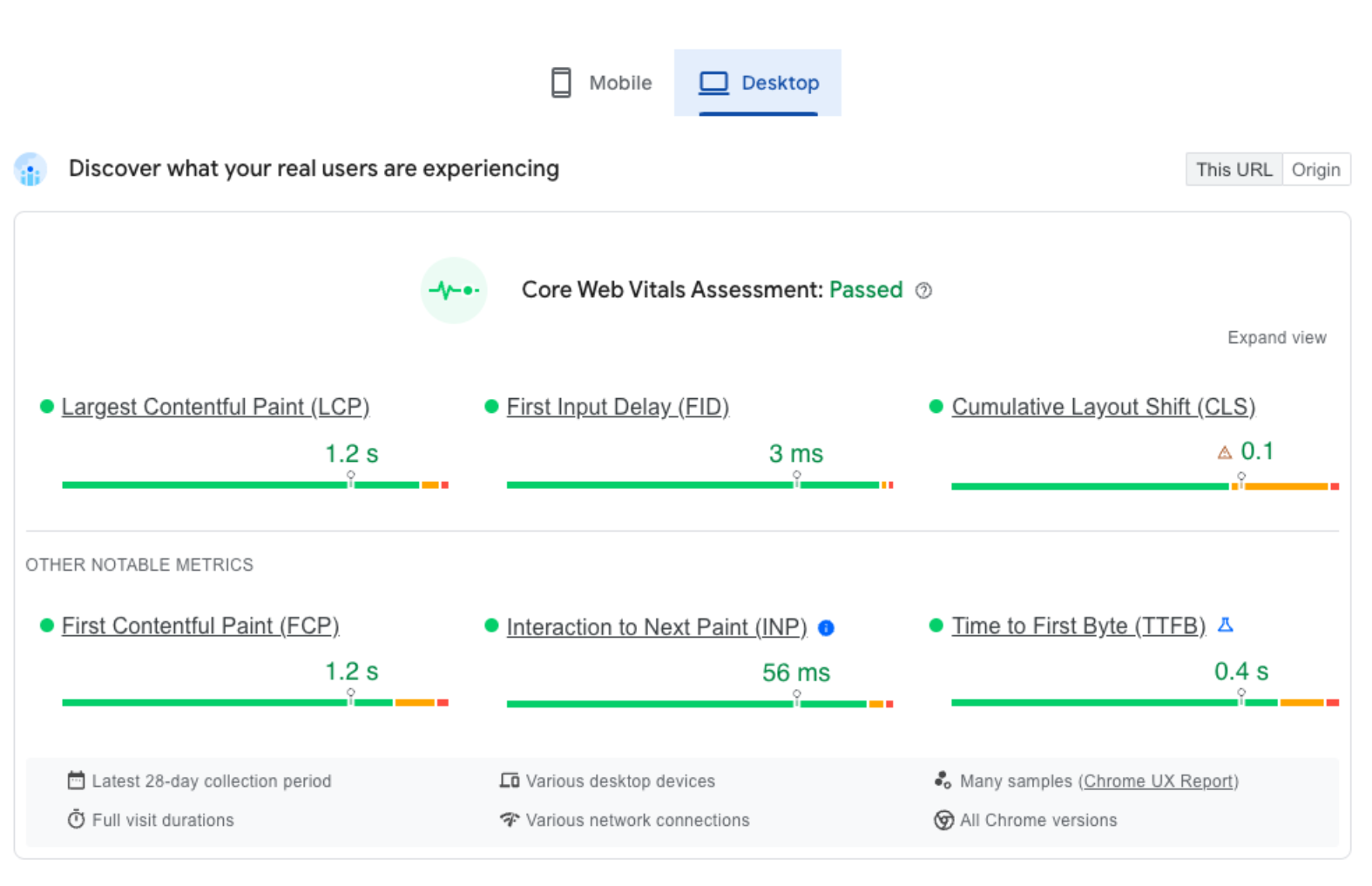
Screenshot provided by the author
Make Your Site Mobile-Responsive
35% of people in the US make a purchase on their mobile devices.
This data point shows that more and more users are switching to mobiles to shop online — which is why making your website mobile-friendly is critical.
If your site’s not mobile-friendly, it could frustrate users and hurt your sales. To ensure mobile responsiveness, here’s what you need to do:
- Add an obvious search bar for users to easily locate products
- Add a prominent zoom icon for users to zoom in on products
- Optimize images for mobile
- Add easy-to-click links
- Write clear CTAs
Set Up a robots.txt File
A robots.txt file instructs search engine bots on what to crawl and index on a website.
Creating a robots.txt file isn’t mandatory but is considered a best practice. It boosts site SEO and load speed by guiding bots to crawl essential sections of web pages and restricting less important ones.
Create and Submit XML Sitemap to Google
An XML sitemap is fairly easy to create. You can use Yoast or any other relevant plugin on WordPress to create XML sitemaps. Here’s an example of Yoast’s XML sitemap:
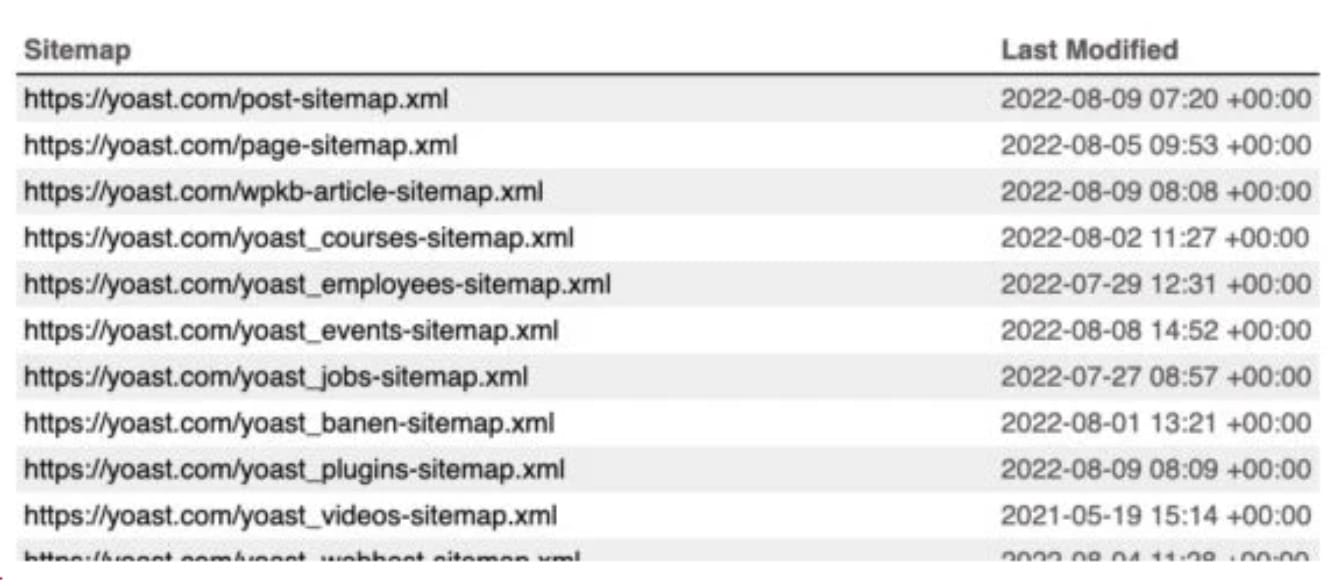
Once you’re done, complete the following steps:
- Create a Search Console account
- Add your website
- Submit your XML sitemap in the “Sitemaps” section
This step quickly indexes your product pages and improves your site’s visibility in search results.
On-page SEO
Let’s move on to all the steps you should cover for on-page SEO.
Conduct Keyword Research
Keyword research is one of the foundational aspects of SEO. You can use tools like Semrush and Ahrefs to nail this step and find target keywords with high search volumes and low competition.
You can then effectively optimize your content and product listings by focusing on the transactional and informational nature of targeted keywords while keeping the search volume in mind.
This step can greatly contribute to increased visibility and conversions.
Title Tags, Meta Descriptions, and Header Tags
Once you’re done conducting keyword research, you can optimize title tags, meta descriptions, and header tags on your website.
As a best practice, don’t stuff the content with keywords. Rather, incorporate them as naturally as possible.
Ensure your content is unique, high-quality, and informative, providing value to both users and search engines.
Alt Text for Images
Add alt-texts to all your images to ensure inclusivity for people with disabilities and to prevent your website from getting banned.
Be elaborate and descriptive while writing alt texts for images. It’ll help visitors using screen readers better understand images and their contexts.
Product Descriptions
Product descriptions provide a perfect platform to win over your visitors and turn them into customers. To get it right, follow these steps:
- Highlight the product’s features, advantages, and benefits
- Add customer reviews to impart trust
- Integrate relevant keywords naturally
- Support words with strong visuals
- Keep your audience in mind
- Make it scannable
For better comprehension, let’s look at an example. VRAI’s page highlights the features and benefits of lab-grown diamond engagement rings, such as the shape, style, metal, and carat size.

It also provides clear and high-quality images of the rings, customer reviews, and testimonials. It includes a call to action encouraging visitors to customize their ring or book an appointment.

By following these best practices, you can create product pages that attract and convert more customers.
User Experience
For e-commerce stores, providing an exceptional user experience is one of the most crucial factors for SEO and maximizing conversion rates.
To achieve this, you must design a website with user-friendliness in mind.
A great example of a brand excelling in user experience is LeatherCult, a renowned leather clothing brand known for its exquisite men’s leather pants.
Their website boasts a user-friendly design, featuring straightforward navigation and strategically placed CTAs. Upon landing on the homepage, visitors are greeted with enticing product showcases and an easy path to explore the catalog.

Their responsive design ensures smooth functionality across different screen sizes and devices.
Off-Page SEO
Work on Building Links for Your Ecommerce Site
Having high-quality backlinks from reputable websites can significantly improve your site’s SEO. To do this, you must build good relationships with people within your industry.
You could contact influencers for collaboration or pitch your services for guest blogging.
Respona is an email outreach tool that can help you find and reach out to website owners to earn a backlink on their websites.
Build Trust Through Customer Reviews
User reviews are great for building trust and credibility. The result? It also helps improve your search engine rankings (by scoring those spots in featured snippets), which means more visibility and conversions. So, get your customers to share their thoughts and ratings on your products.
Olipop, a healthy soda brand, has placed customer reviews on its product pages to increase trust among first-time visitors (with the goal of increasing conversions).
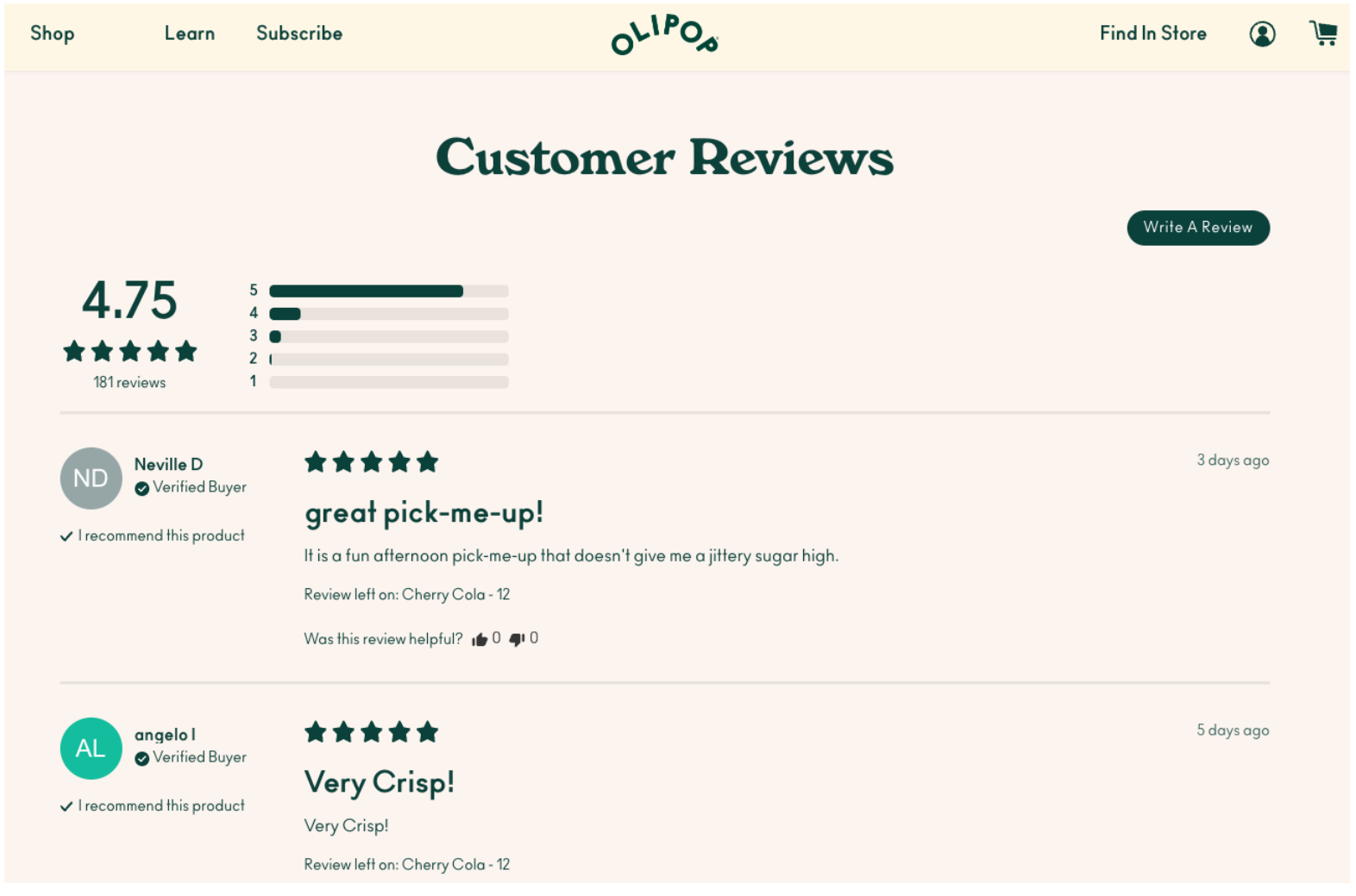
Plus, it’s social proof for the win — another simple way to convince potential customers that your product is worth purchasing.
Get Active on Social Media
SEO is a slow burner, which means it takes time to show results. But there’s something that can bring you results quicker than SEO: social media.
You must post regularly on social media to stay relevant to your target audience. Always link those posts to your site to bring more visibility.
To achieve quicker outcomes, consider running paid ad campaigns to reach potential customers who may not be actively searching for your products.
The ads can push them to click on your site link and make a purchase. Don’t forget to add social media sharing buttons on your product pages to encourage users to share your products.
Set Up Google Search Console and Google Analytics for Your Site
Having a Google Search Console and Google Analytics set up is crucial for your website. Without these tools, you won’t know how well your content performs or what keywords people search for to get to your site.
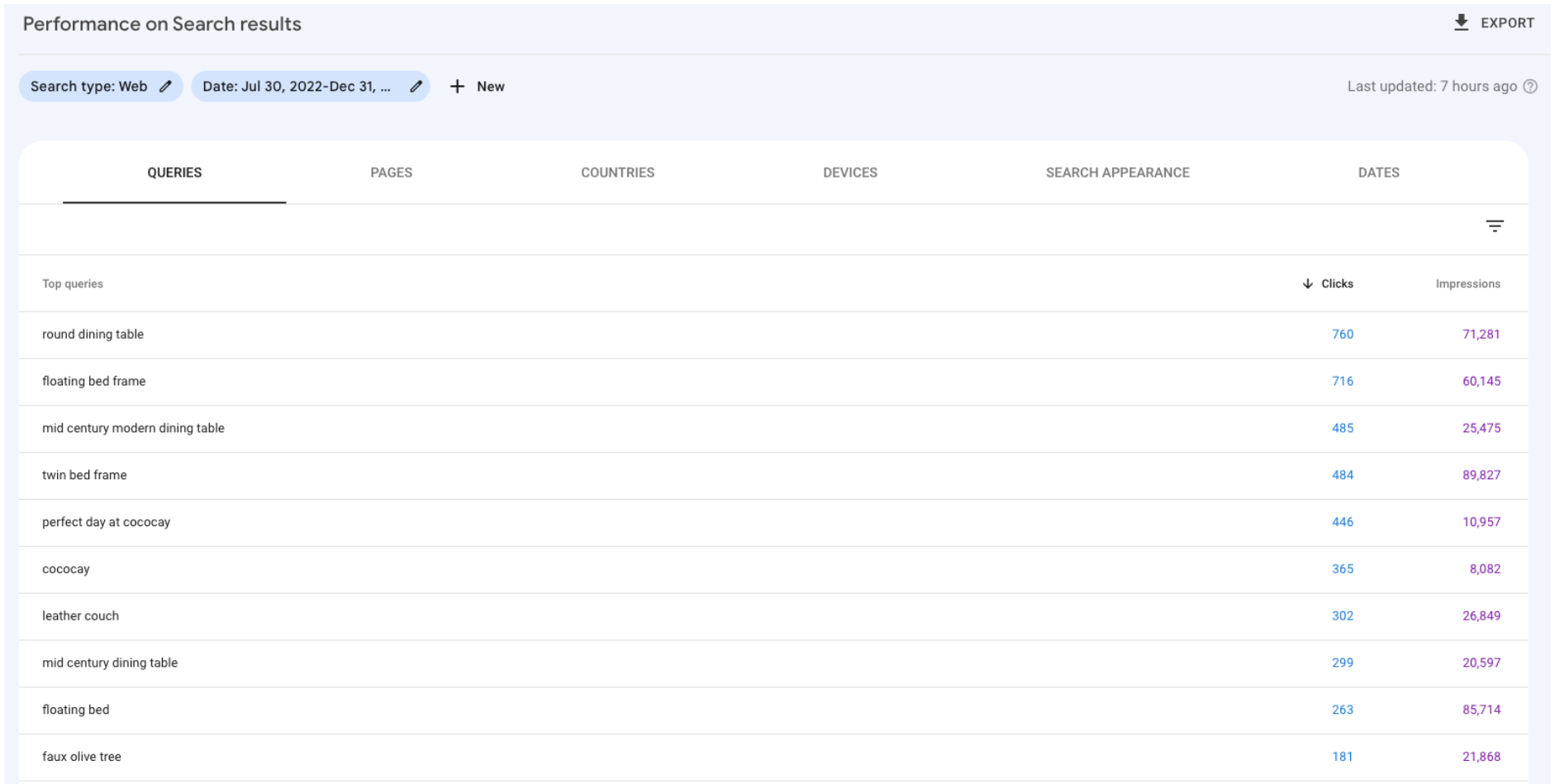
Screenshot provided by the author
Without them, it feels like you’re flying blind. Clay Cary, a discount trends analyst and e-commerce consumer trends analyst at CouponFollow, says,
“I strongly advocate integrating tools like Google Analytics and Google Search Console with your ecommerce site.”
“These tools provide invaluable insights into user behavior, website performance, and technical SEO issues. In my work at CouponFollow, we’ve leveraged these tools to refine our marketing strategies, leading to a significant uplift in both traffic and user engagement.”
Semantic SEO
Add Structured Data to Product Pages
Structured data (schema markup) enhances search engine comprehension for Google’s rich snippets.
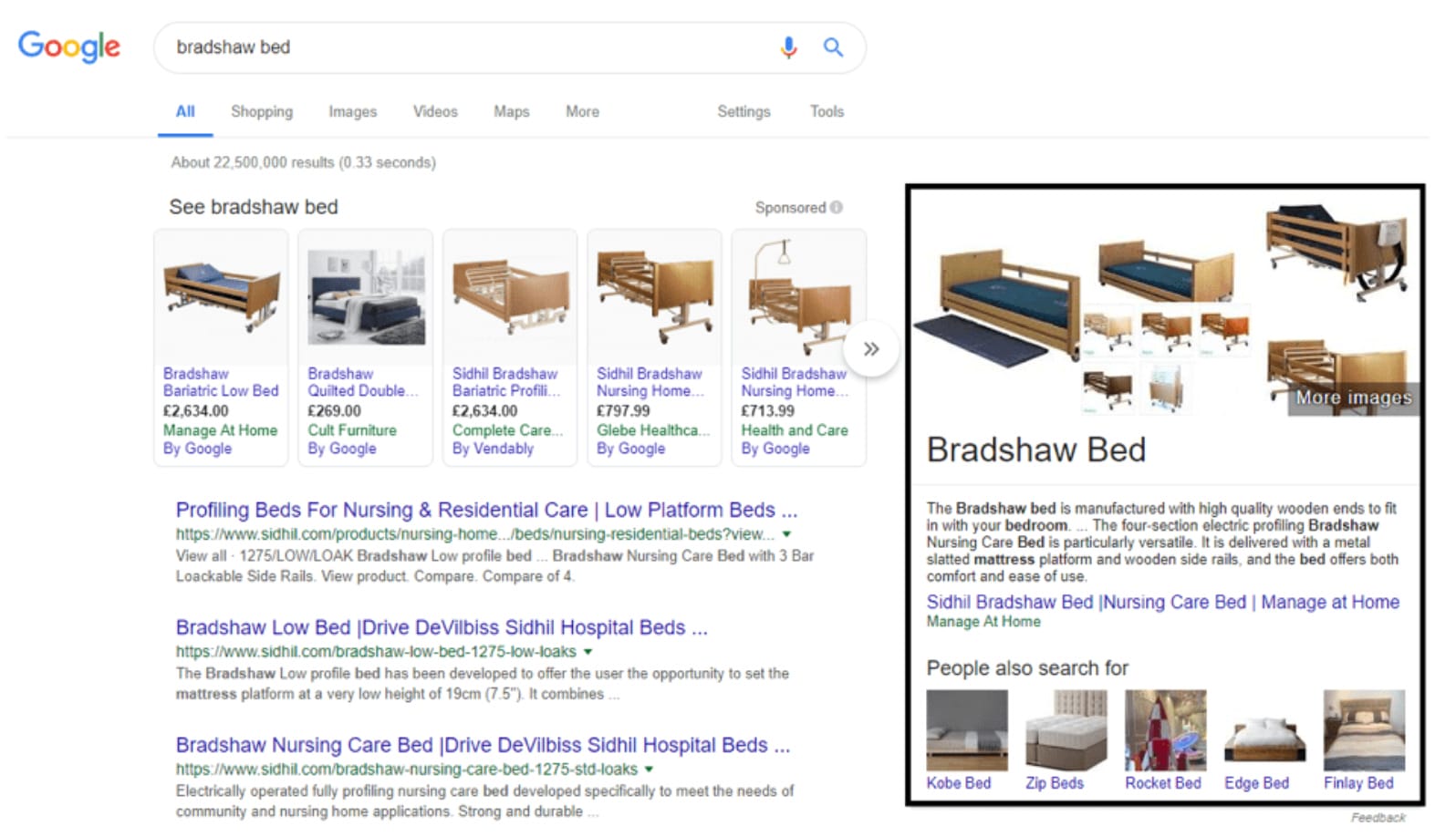
It uses tags and attributes to provide detailed descriptions of your content, including articles, product descriptions, reviews, events, recipes, and more.
Structured data offers multiple advantages for SEO:
- Qualifies content for specialized search functions.
- Makes Google better understand your content.
- Improves search engine rankings.
- Increases click-through rates.
Adding schema markup can be difficult if you don’t have sufficient technical knowledge. Thankfully, that’s our bread and butter at WordLift. Let our AI-powered SEO tool do the heavy lifting for you.Second, with our product knowledge graph builder, you can store, organize, and connect your store’s products to boost visibility and sales on Google Shopping. See your results in beautiful, easy-to-read charts thanks to the Looker Studio Connector.

Publish Quality (Relevant) Content on Your Site
It might sound like a broken record, but we’ll say it again — content is king. Even today. Why?
People (and Google) like good, relevant content. It’s also a ranking factor.
By creating helpful, informative content that matches search intent, you can enhance your rankings on SERPs and get more traffic to your site, but through all this, your end goal should be to get more sales.
John Murphy, founder and CEO of eBike Generation, suggests:
“Get people to your store using a helpful piece of content, but be sure to guide them towards a sale.”
“If your blog post talks about a product, internally link it to the product page. You also want to include clear CTAs, banners, and a navigation menu that’s straightforward and easy to understand, which supports the customer’s journey through the website to purchase.”
As an ecommerce store owner, creating good content and publishing it regularly on your website can be tedious.

But you shouldn’t worry because, with Wordable, you can publish perfectly optimized content from Google Docs to your site in 1-click. All you have to do is write the content and leave the rest on Wordable.
Pro-tip: Don’t underestimate the power of adding internal links to your content. It helps users and search engines navigate your content and website, thus improving your SEO efforts.
Finally, Check All the Boxes off Your Ecommerce SEO Checklist
Remember, SEO is an ongoing process, so you must stay updated with the latest trends to get it right every time.
Thanks to this exhaustive list, tweaks, and experimentation with new SEO trends, you can get the best bang for your buck.
Remember that the key lies in experimentation, analyzing data, and working on areas that require improvement.